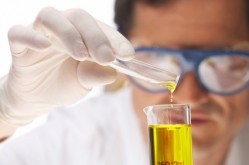CAAT-EU kicks off the year with new papers on toxicology testing

New paper
According to the Centre for Alternatives to Animal Testing, despite the fact that toxicology uses many stand-alone tests, a systematic combination of several information sources is often required and the paper addresses these options.
“This paper describes and makes suggestions as to the definition, systematic combination, and quality assurance of ITS.”
ITS have been discussed for more than a decade, and some attempts have been made in test guidance for regulations. However, despite their potential for revamping regulatory toxicology, the Committee says researchers still have little guidance on their composition, validation, and adaptation in different situations.
Thus, this paper sets about illustrating that these strategies offer solutions when the human predictivity of a single test is not satisfactory or when existing data and evidence from various tests will be integrated.
To get an in-depth look at the strategies outlined in the document, please see here.
Workshop
CAAT-EU is also the Secretariat for the Evidence-based Toxicology Collaboration (EBTC) who held a workshop in January of last year on the ‘Evidence-based Toxicology for the 21st Century: Opportunities and Challenges’ to which the report is now also available on the Committee's website.
The presentations at that workshop largely reflected two iof EBTC's priorities; firstly to apply evidence-based methods to assess the performance of emerging pathway based testing methods consistent with the 2007 National Research Council report on Toxicity Testing in the 21st Century as well as to adopt a governance structure and work processes to move that effort forward.
To see that report, please click here.
Animal testing focus
Back in May the Committee also held an open workshop on the ‘Human Toxome Project’ for alternatives to animal testing in Brussels.
There, it offered industry professionals to see first-hand, how the Human Toxome Project can help the industry to comply with major European Regulations dealing with cosmetics, chemicals and toxicity testing.
The proposed ban on animal testing, due to take effect in 2013, has hit a few hurdles and there has been increased pressure throughout the industry for the European Commission to uphold this.
Thus, regulations imposed by the Registration, Evaluation, Authorisation and Restriction of Chemicals (REACH) in 2006 have led to an unprecedented need for alternatives in Europe.



















